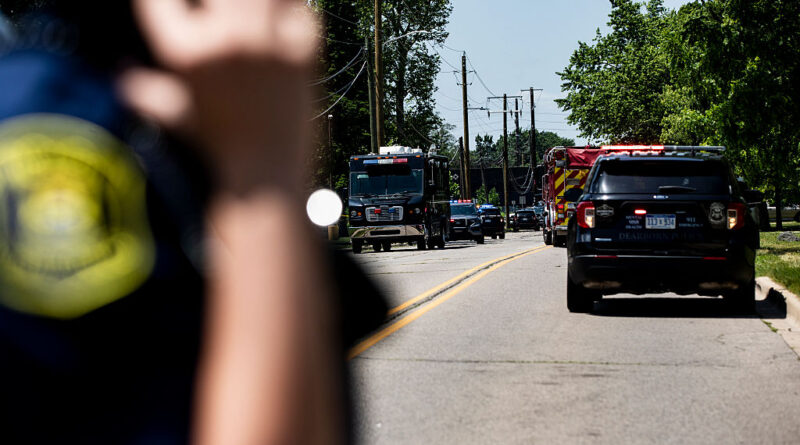US Cities See Historic Decline in Crime Rates
Over recent years, several cities across the United States have been successful in significantly reducing crime rates. Notably, homicide rates in Cleveland have seen a decline of 46% in the last three years. Moreover, in Chicago, they’ve managed to decrease homicides by approximately 38% since the dawn of 2020.
Newark, too, has made promising strides in safeguarding its communities. The city has witnessed over a 60% decrease in violent crime as well as homicides in the course of the past decade. It is important to note that this remarkable reduction has been achieved not through stringent, uncompromising criminal policies but via a more humane and inclusive approach.
The mayors of these cities provided their insights into the combat against crime in a media briefing last Thursday. The secure environment that citizens can now cherish is attributed to the community-centered strategies these cities have adopted. These vary from localized policing to youth employment programs, offering mental health services, and active violence intervention activities.
Reinforcing reliability in the national crime statistics, halfway through 2025, homicides in the country have decreased by 22.6%. The trend further expands to the broader perspective of crime, wherein there’s been a 6.4% drop in overall violent crime and property crime has decreased by 8.8% since 2020. These numbers reinforce the efficacy of community-based approaches to enhance public safety.
More substantial investment took place at both the federal and local levels to empower community-focused strategies for safety. This infusion of considerable economic resources, potentially amounting to billions, led to the measurable drop in nationwide crime rates we see today. Interestingly though, during this time of diminishing crime rates, the police force shrank by roughly 5% to 10%, debunking the assumption that increased law enforcement directly relates to safer communities.
Chicago stands as an example of efficient crime reduction through strategic planning. The approach included carefully allocating police personnel, forging partnerships with local violence intervention groups, and investing in mental health facilities and youth employment programs focused on the city’s most violent neighborhoods.
Chicago’s approach towards dealing with crime also addressed a significant issue that was plaguing its communities – the longstanding mistrust between the citizens and the police. This ill-faith stemmed from decades of detrimental policing practices predominantly targeted at the city’s Black community. Working towards resolving past grievances was a vital part of the city’s holistic approach to crime reduction.
Moving forward, the consensus among city leaders is that while constitutional policing holds a significant role in crime reduction, it cannot bear the sole responsibility for managing a city’s social challenges. The paradigm of approaching crime needs to shift from relying solely on the police force to a broad governmental responsibility that includes varied social sectors.
Like Chicago and Cleveland, Baltimore also witnessed historic lows in violent crime and homicides this year, achieving unprecedented safety levels in the city’s history. This exceptional feat is largely credited to the city’s emphasis on deterrence, investing in community violence intervention mechanisms and hospital-response programs.
Further, Baltimore has also directed resources towards overlooked facets of community engagement activities like recreational parks in neighborhoods that had been historically marginalized. The city’s leaders also conveyed that the conventional ‘zero-tolerance’ policy and indiscriminate incarceration, particularly of economically disadvantaged and Black individuals, have proved to be ineffective.
In terms of law enforcement, the essence of the matter isn’t about the count of arrests made by the police department but rather about the intent, the misdemeanors for which people are being detained, and ensuring accountability for everyone. Thus, it’s the quality over quantity approach that makes the difference.
Similarly, Newark’s more than 60% reduction in violent crimes and homicides over the last ten years is largely due to a comprehensive strategy involving multiple sectors. This plan incorporates not just the police force, but also hospitals, community organizations, public safety roundtables, and intelligent policing that identifies the most at-risk individuals and communities.
Trust building initiatives between law enforcement and community members played a crucial role in Newark’s strategy in reducing crime. These programs combined with prolific targeting of the individuals and neighborhoods most prone to violence are narratives of the city’s resounding success.
The decision to cancel hundreds of public safety grants in April by the previous administration is seen unfavorably. Many believe this decision will have severe implications on a plethora of crime prevention programs which form the backbone of the community-focused strategies these cities have successful employed.
Though the journey isn’t over, these cities’ experiences offer promising and insightful strategies to other regions plagued by crime. They underscore the efficacy of approaches that embrace community involvement, localized solutions, and novel perspectives on police roles and responsibilities.



